What to do if my Bryant 314AAV Furnace has an ignition lockout?
- NNicole TurnerAug 3, 2025
If your Bryant Furnace is experiencing an ignition lockout, turn off the power to the furnace and wait 5 minutes before attempting to restart it.
What to do if my Bryant 314AAV Furnace has an ignition lockout?
If your Bryant Furnace is experiencing an ignition lockout, turn off the power to the furnace and wait 5 minutes before attempting to restart it.
How to fix ignition proving failure in Bryant 314AAV Furnace?
To address an ignition proving failure in your Bryant Furnace, first check that the gas valve is turned on, the manual shut-off valve is open, the green/yellow wire is securely connected to the furnace sheet metal, and the flame sensor is not grounded.
What to do if the low-heat pressure switch did not close or reopened in my Bryant 314AAV?
If the low-heat pressure switch in your Bryant Furnace did not close or reopened, check the following: if the low-heat pressure switch is stuck open; if the pressure tubing is disconnected or obstructed; the vent sizing; the low inlet gas pressure (if LGPS is used); if the condensate drain is plugged; if the combustion air supply is restricted; and if there is water in the vent piping, possibly sagging.
Why is my Bryant 314AAV Furnace experiencing a gas heating lockout?
If your Bryant Furnace is experiencing a gas heating lockout, check for the following: improper low-heat gas input adjustment, a gas valve relay stuck closed on the control, or a high-heat solenoid stuck in the gas valve.
How to troubleshoot a limit circuit lockout on a Bryant Furnace?
To troubleshoot a limit circuit lockout on your Bryant Furnace, reconnect the R thermostat lead and set the thermostat to call for heat. Then, connect a voltmeter across the gas valve connections to see if the gas valve receives 24V.
What causes an abnormal flame-proving signal in a Bryant 314AAV Furnace?
An abnormal flame-proving signal in a Bryant Furnace can be caused by a stuck open or leaky gas valve. Check the gas valve for these conditions.
What to do if the pressure switch did not open in my Bryant Furnace?
If the pressure switch in your Bryant Furnace did not open, check to see if the pressure switch is stuck closed.
Covers national and local codes for installation safety and compliance.
Procedure to prevent damage to electronic components from static discharge.
Guidelines for selecting the proper installation location for the furnace.
Requirements for providing adequate air for furnace operation.
Detailed instructions for installing the furnace in various configurations.
Procedures and warnings for making electrical connections to the furnace.
Requirements and guidelines for proper furnace venting.
Steps for initial furnace start-up, adjustments, and safety control verification.
Guidelines for routine maintenance and servicing of the furnace.
Directory for obtaining replacement furnace parts.
Warnings regarding fire, explosion, shock, and carbon monoxide.
Specifies required clearances from combustible materials for safe installation.
General safety requirements and national standards.
Basic requirements for installing the furnace.
Ensuring adequate airflow for combustion and ventilation.
Standards for designing and installing air duct systems.
Procedures for gas piping installation and leak testing.
Requirements for safe electrical hookups.
Standards for connecting the furnace vent system.
Warnings about contaminated air affecting furnace safety and performance.
Specific installation steps for upflow configurations.
Specific installation steps for downflow configurations.
Guidelines for installing the furnace in a horizontal position.
Information on filter installation and types.
General design and sizing standards for duct systems.
Instructions for connecting supply air ducts.
Restrictions for return air connections in different furnace orientations.
Installation and safety procedures for gas piping.
Warnings regarding electrical shock and fire during installation.
Specific instructions for 115-volt wiring.
Procedure for relocating the junction box.
Hazards related to mounting disconnect switches and wiring.
Electrical schematic illustrating furnace wiring connections.
Instructions for making 24-volt thermostat and accessory wiring connections.
Warnings about improper venting and carbon monoxide risks.
Safety codes and requirements for proper vent sizing and installation.
Flowchart to guide chimney inspection for suitability.
Requirements for masonry chimneys used with the furnace.
Impact of appliance operation on venting system performance.
Caution regarding hot vent pipes near children.
Warning about sharp edges on sheet metal parts.
Steps for initial furnace start-up and basic operation.
Steps to test furnace safety controls like limit and draft safeguard switches.
Final checks to ensure proper installation and operation.
General safety warnings before performing maintenance.
Step-by-step guide for filter replacement.
Maintenance for blower motor and wheel cleanliness.
Explanation of the function of each furnace setup DIP switch.
Procedures for adjusting gas input and manifold pressure.
Adjusting blower off delay, thermostat anticipator, and airflow.
Electrical schematic illustrating furnace wiring connections.
Overview of furnace electrical controls and wiring practices.
Procedure for testing individual furnace components.
General guidelines for furnace care and maintenance.
Procedures for cleaning or replacing heat exchangers.
How the furnace operates in two-stage heating modes.
Modes of operation for cooling systems.
Operation with a Thermidistat for dehumidification.
How the blower operates in continuous mode.
Procedure for testing individual furnace components.
Guide to diagnose and resolve furnace operational issues.
Covers national and local codes for installation safety and compliance.
Procedure to prevent damage to electronic components from static discharge.
Guidelines for selecting the proper installation location for the furnace.
Requirements for providing adequate air for furnace operation.
Detailed instructions for installing the furnace in various configurations.
Procedures and warnings for making electrical connections to the furnace.
Requirements and guidelines for proper furnace venting.
Steps for initial furnace start-up, adjustments, and safety control verification.
Guidelines for routine maintenance and servicing of the furnace.
Directory for obtaining replacement furnace parts.
Warnings regarding fire, explosion, shock, and carbon monoxide.
Specifies required clearances from combustible materials for safe installation.
General safety requirements and national standards.
Basic requirements for installing the furnace.
Ensuring adequate airflow for combustion and ventilation.
Standards for designing and installing air duct systems.
Procedures for gas piping installation and leak testing.
Requirements for safe electrical hookups.
Standards for connecting the furnace vent system.
Warnings about contaminated air affecting furnace safety and performance.
Specific installation steps for upflow configurations.
Specific installation steps for downflow configurations.
Guidelines for installing the furnace in a horizontal position.
Information on filter installation and types.
General design and sizing standards for duct systems.
Instructions for connecting supply air ducts.
Restrictions for return air connections in different furnace orientations.
Installation and safety procedures for gas piping.
Warnings regarding electrical shock and fire during installation.
Specific instructions for 115-volt wiring.
Procedure for relocating the junction box.
Hazards related to mounting disconnect switches and wiring.
Electrical schematic illustrating furnace wiring connections.
Instructions for making 24-volt thermostat and accessory wiring connections.
Warnings about improper venting and carbon monoxide risks.
Safety codes and requirements for proper vent sizing and installation.
Flowchart to guide chimney inspection for suitability.
Requirements for masonry chimneys used with the furnace.
Impact of appliance operation on venting system performance.
Caution regarding hot vent pipes near children.
Warning about sharp edges on sheet metal parts.
Steps for initial furnace start-up and basic operation.
Steps to test furnace safety controls like limit and draft safeguard switches.
Final checks to ensure proper installation and operation.
General safety warnings before performing maintenance.
Step-by-step guide for filter replacement.
Maintenance for blower motor and wheel cleanliness.
Explanation of the function of each furnace setup DIP switch.
Procedures for adjusting gas input and manifold pressure.
Adjusting blower off delay, thermostat anticipator, and airflow.
Electrical schematic illustrating furnace wiring connections.
Overview of furnace electrical controls and wiring practices.
Procedure for testing individual furnace components.
General guidelines for furnace care and maintenance.
Procedures for cleaning or replacing heat exchangers.
How the furnace operates in two-stage heating modes.
Modes of operation for cooling systems.
Operation with a Thermidistat for dehumidification.
How the blower operates in continuous mode.
Procedure for testing individual furnace components.
Guide to diagnose and resolve furnace operational issues.
| Model | 314AAV |
|---|---|
| Type | Gas Furnace |
| Heating Capacity | 40, 000 - 120, 000 BTU/h |
| Stages | Single-stage |
| Blower Type | Multi-speed |
| Fuel Type | Natural Gas or Propane |
| Efficiency | 80% AFUE |
| AFUE Rating | 80% |
| Blower Motor Type | Multi-speed |
| Ignition Type | Hot Surface Ignition |
| Efficiency Rating | High Efficiency |
| Warranty | 10-Year Parts Limited Warranty upon timely registration |
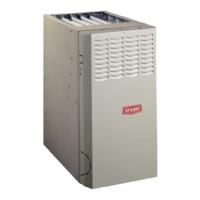
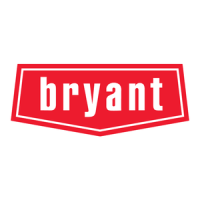
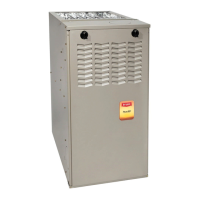


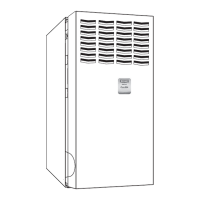




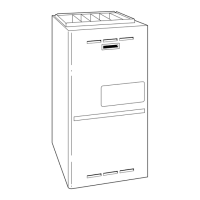
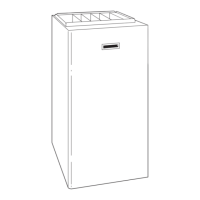
